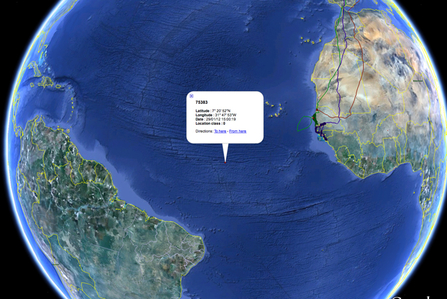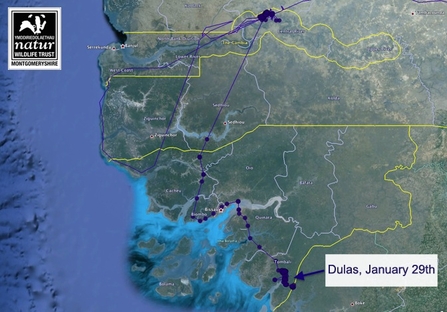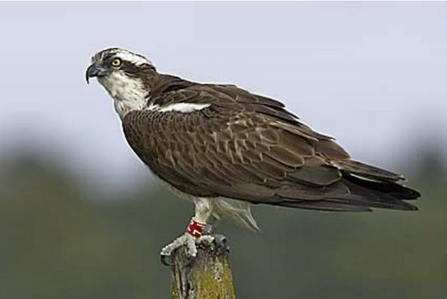Dulas seems to have settled down again. Having set off mid-January, just a few hours before Janine and the Rutland guys got to Panchang in the Gambia where he had been since early October, he now seems to have set up home around 175 miles to the south of his old location in the southern Tombali region of Guinea-Bissau.
His coordinates and data were very late coming through this time for some reason and for a few hours the satellite system had him in the middle of the Atlantic! It's only when all the data in a particular information window is in, that you can really refine it and put it through some sophisticated software; this in turn churns out all the way-points that you can see on Google Earth. Once that window is open, however, you can ask the system for a 'last known location point' - a kind of shortcut to save waiting for the data window (which can take up to 10 hours) to finish. The problem with this system, however, is that the point it gives you is not necessarily that accurate. This is the way-point that it gave for three whole hours during the last window.



